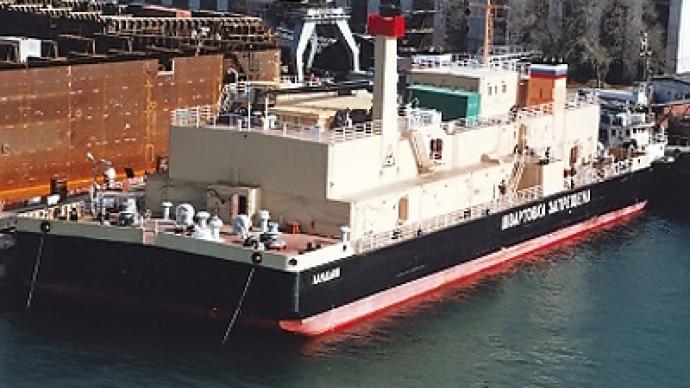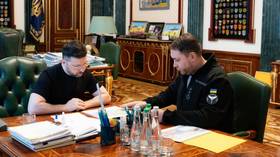Russia ready to dispatch radiation processing vessel to Japan

Russia is ready to send a unique vessel which can process radioactive liquid to Japan, the ship’s captain announced. This comes as another powerful earthquake hit the country’s northeast, leading to a radioactive spill at one of the nuclear plants.
As a result of a new earthquake which occurred on Thursday and measured 7.4 on the Richter scale, over three liters of radioactive water spilled from the spent fuel storage pool at reactor 2 of Onagawa nuclear facility. The water has reportedly spilled onto the floor at the building. Onagawa facility operator Tohoku Electric Power Co. announced that the quake also damaged pressure-controlling devices inside the facility. No change of radiation outside the plant was reported. As Japan continues to be shaken by a series of aftershocks following the powerful earthquake that hit the country on March 11, Russia announced that a special factory to process liquid radioactive waste, the “Landysh”, is ready to deploy to Japan at any moment. The factory is used in Russia to service Russian Pacific Fleet submarines and in 10 years of work it has processed over 5,000 tons of radioactive waste. It was constructed as part of a nuclear disarmament partnership program between Russia and Japan using Japanese budget money. In light of the recent events in Japan, the work of the Landysh has evoked serious interest among the Japanese authorities. The Japanese government made a request to the Russians to consider Japanese use of the facility at the troubled Fukushima power plant. Two major Japanese news outlets, Kyodo news agency and NHK television, visited the Landysh on Friday in order to see how the facility works. The journalists had a chance to talk to the crew of the unique vessel. The factory is placed on a barge, which can be carried to any necessary place. It is currently based at the town of Bolshoy Kamen in the Russian Far East. The waste processing part of the plant is hidden inside a concrete cocoon, which prevents the waste from getting into the water. A Russian nuclear energy agency “Rosatom” spokesman announced earlier that if the Japanese side is satisfied with the technical characteristics of the plant, it can be sent to Fukushima shortly. Experts believe that the Landysh can be used to process radioactive water, which has filled a number of the Fukushima plant’s premises and drainage system. According to earlier reports, tens of thousands of tons of radioactive water had collected in the plant’s systems. The radioactive water is due to be collected in special cisterns. The Landysh has the capacity to process 7,000 cubic meters of liquid radioactive waste a year. The water can then even be used to breed fish. The factory, however, can only rework waste of low and medium radioactivity.
When making the decision to build nuclear facilities in Japan’s territory, the country’s authorities ignored the seismic situation in the region, Philip White from the Citizen's Nuclear Information Center told RT. “When Japan went into nuclear energy, say, when they first set up a policy about 50 years ago and they actually started implementing it by bringing nuclear power plants 40 year ago – at that stage they really were determined to go ahead. Any inconvenient information, like the vulnerability of plants to earthquakes, the fact that the ground location was unstable – that sort of information was suppressed right from the very beginning,” he said.














